Welcome to our detailed guide on heirloom tomatoes, a favorite among gardeners and chefs alike for their exceptional flavor and stunning diversity. Here, we provide an exhaustive list of heirloom tomato varieties, their unique characteristics, and comprehensive cultivation instructions.
What are Heirloom Tomatoes?
Heirloom tomatoes are open-pollinated varieties that have been passed down through generations due to their valued traits. They come in a wide range of colors, shapes, sizes, and flavors, offering a delightful diversity that is often missing in commercial tomato varieties.
Heirloom Tomato Varieties
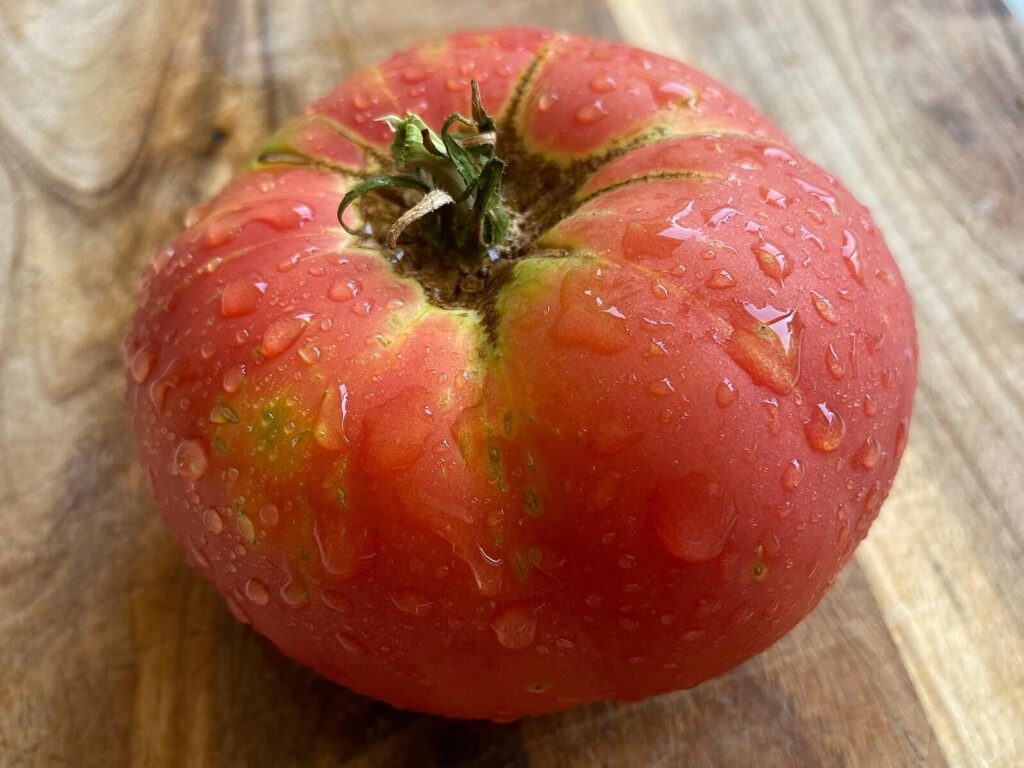
Brandywine
Known for its large, beefsteak fruits and exceptional flavor, the Brandywine is a favorite among many gardeners. It thrives in growing zones 4-9 and prefers full sun. Plant in early spring after the risk of frost has passed. Watch out for common tomato pests like hornworms and diseases like blight. Learn more about Brandywine heirloom tomatoes.
Shop Brandywine Heirloom Tomato Seeds Here
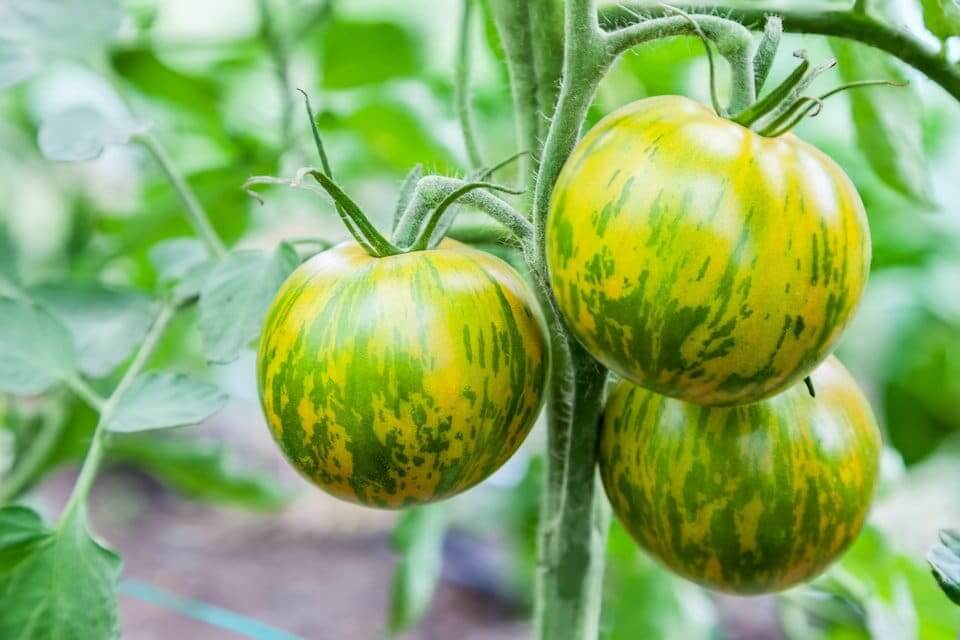
Green Zebra
This variety is prized for its striking green and yellow striped fruits and tangy flavor. It grows well in zones 3-9 and requires full sun. Plant in early spring, and monitor for pests like aphids and diseases like tomato mosaic virus. Learn more about Green Zebra heirloom tomatoes.
Shop Green Zebra Heirloom Tomato Seeds Here
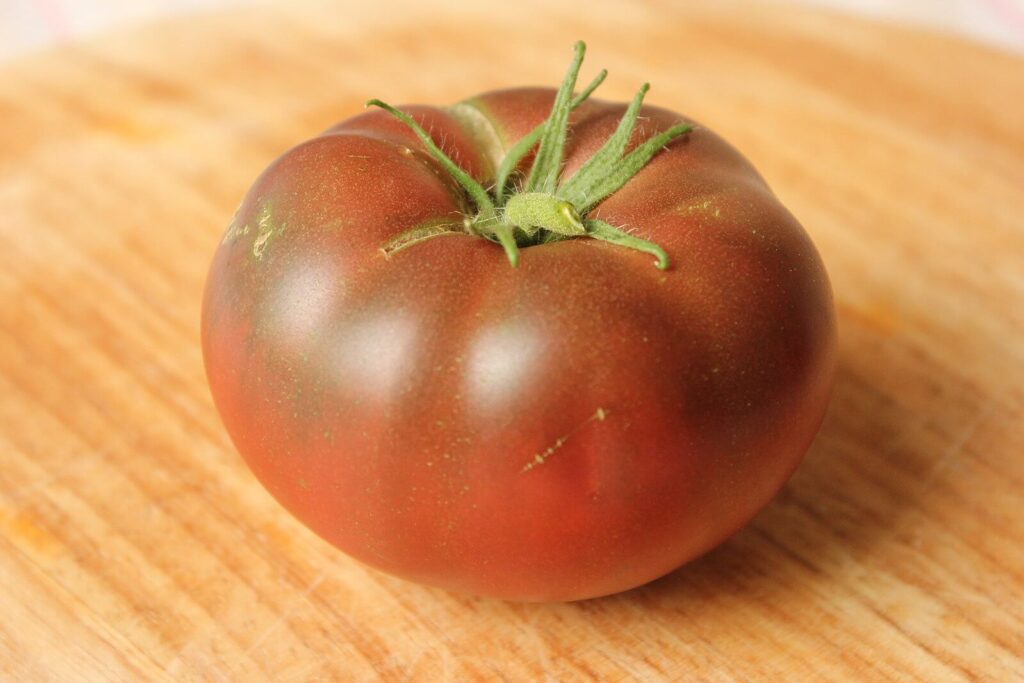
Cherokee Purple
This variety produces large, dark purple fruits with a rich, sweet flavor. It does well in zones 4-11 and needs full sun. Plant in early spring and be vigilant for pests like stink bugs and diseases like fusarium wilt. Learn more about Cherokee Purple heirloom tomatoes.
Shop Cherokee Purple Heirloom Tomato Seeds Here
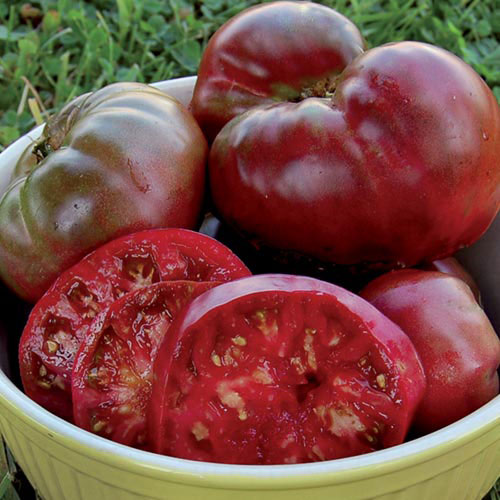
Black Krim
Originating from the Isle of Krim in the Black Sea, this variety offers dark, reddish-purple fruits with a unique, salty flavor. It thrives in zones 3-11 and requires full sun. Plant in early spring, and watch out for pests like whiteflies and diseases like verticillium wilt. Learn more about Black Krim Heirloom Tomatoes.
Shop Black Krim Heirloom Tomato Seeds Here

Yellow Pear
This variety produces small, pear-shaped yellow fruits with a sweet, mild flavor. It grows well in zones 3-9 and needs full sun. Plant in early spring and monitor for pests like spider mites and diseases like bacterial spot. Learn more about the Yellow Pear Heirloom Tomato.
Shop Yellow Pear Heirloom Tomato Seeds Here
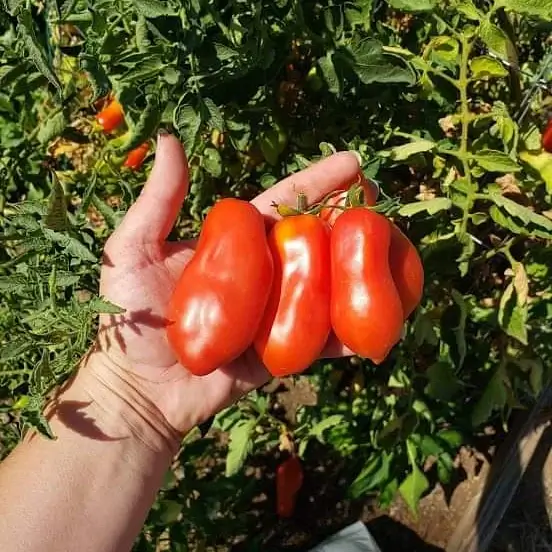
San Marzano
A classic Italian variety, San Marzano is known for its elongated fruits and excellent flavor, making it ideal for sauces and pastes. It thrives in zones 3-10 and prefers full sun. Plant in early spring, and be vigilant for pests like tomato fruitworms and diseases like early blight. Learn more about San Marzano Heirloom Tomatoes.
Shop San Marzano Heirloom Tomato Seeds Here
Striped German: This variety offers large, multicolored fruits with a sweet, fruity flavor. It does well in zones 4-9 and requires full sun. Plant in early spring and watch out for pests like cutworms and diseases like late blight.
Shop Striped German Heirloom Tomato Seeds Here
Great White: As the name suggests, this variety produces large, white fruits with a sweet, mild flavor. It thrives in zones 3-9 and needs full sun. Plant in early spring, and monitor for pests like tomato pinworms and diseases like septoria leaf spot.
Shop Great White Heirloom Tomato Seeds Here
Pink Ponderosa: This variety is known for its large, pink fruits and sweet, juicy flavor. It grows well in zones 3-9 and prefers full sun. Plant in early spring and be vigilant for pests like leaf miners and diseases like anthracnose.
Shop Pink Ponderosa Heirloom Tomato Seeds Here
Rutgers: An old-time favorite, Rutgers offers medium-sized, red fruits with a classictomato flavor. It thrives in zones 3-9 and requires full sun. Plant in early spring, and watch out for pests like tomato hornworms and diseases like blossom end rot.
Shop Rutgers Heirloom Tomato Seeds Here
General Care Instructions for Heirloom Tomatoes
While specific care instructions may vary slightly depending on the variety, here are some general tips for growing heirloom tomatoes:
- Planting Time: Heirloom tomatoes are warm-season plants and should be planted in early spring after the risk of frost has passed.
- Sunlight: Tomatoes require full sun, with at least 6-8 hours of sunlight per day.
- Watering: Water regularly, aiming for a consistent moisture level. Avoid overhead watering to reduce the risk of disease.
- Soil: Tomatoes prefer well-drained soil rich in organic matter. A pH level between 6.0 and 6.8 is ideal.
- Spacing: Allow enough space between plants for air circulation to help prevent disease. Typically, plants should be spaced 24-36 inches apart.
- Fertilizing: Use a balanced fertilizer to provide necessary nutrients. Some gardeners prefer to use a tomato-specific fertilizer.
- Support: Most tomato plants will need support as they grow. This can be provided with cages, stakes, or trellises.
- Pest and Disease Control: Monitor plants regularly for signs of pests or disease. Use organic or chemical controls as necessary, and consider crop rotation to prevent disease build-up in the soil.
Return to the Heirloom Seeds Guide
or
Shop All Heirloom Tomato Seed Varieties Here
In Conclusion
Heirloom tomatoes offer a delightful diversity of flavors, colors, and shapes, making them a joy to grow and eat. While they may require a bit more care than some commercial varieties, the rewards are well worth the effort. We invite you to explore the world of heirloom tomatoes and discover the rich flavors and history they hold.
Keywords: Heirloom Tomatoes, Tomato Varieties, Open-Pollinated, Brandywine, Green Zebra, Cherokee Purple, Black Krim, Yellow Pear, San Marzano, Striped German, Great White, Pink Ponderosa, Rutgers, Tomato Cultivation, Tomato Pests and Diseases.